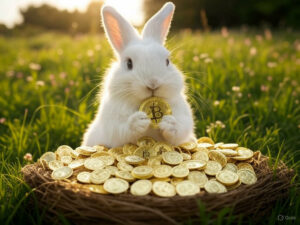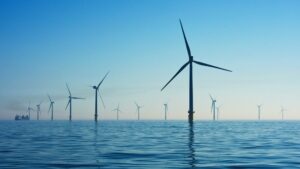Organic, plastic, regional: What is the best Christmas tree?

Decorated with glittering balls, stars, and tinsel, brightened with colorful LED lights: the Christmas tree is simply part of the holiday for those who celebrate Christmas. This is what creates the Christmas magic we long for all year: Driving to the local store, finding a nice tree – not too big, not too small – and then proudly bringing it home and setting it up in the living room. Getting the Christmas tree decorations from the cellar, decorating the Christmas tree to the sound of Christmas carols, and the smell of tangerines and fruit tea in your nose. Then, in the Holly evening, gathering around the splendid tree and opening presents in joyful anticipation.
Sadly, the Christmas tree does not stay there for long afterward, usually only for a few days or a maximum of a month. When shopping and preparing for the holidays, very few people think how good their Christmas tree is for the environment and the climate. But it is often not that easy to say how much green there is in the green Christmas tree. Due to long transport routes, the use of pesticides on the plantations, or environmentally harmful plastic, the environmental impact of Christmas trees varies greatly. But there have long been alternatives to the classic Nordmann fir that are more environmentally friendly and sustainable. We took a look at them. Check out the most sustainable Christmas trees:
Regional is not necessarily environmentally friendly
The Nordmann fir is a particularly common choice for a Christmas tree at home. It is one of the most popular Christmas trees that many take away from the sales booth around the corner. But many buyers do not know that the Nordmann fir is not so native in this country. It is indigenous to the mountains south and east of the Black Sea, in Turkey, Georgia, and the Russian Caucasus. There the fir seeds are picked by hand at lofty heights and then processed, sifted, and washed.
The work of pickers in Georgia is often dangerous. That is why there are certificates such as “ Fair Trees ”, which advocate good working conditions for workers, a decent wage, and safe climbing equipment. Christmas trees with one of these certificates are sold all over Europe. When buying, you should still pay attention to other labels, because fair production does not mean that the tree was also organically grown.
The seeds are delivered from Georgia to plantations in Denmark, Hungary, Austria, Germany, Poland, and the Czech Republic. So they have already traveled a long way before they are often planted, raised, and sold in established Christmas tree monocultures.
According to the nature conservation association Nabu, the majority of Christmas trees sold in Europe come from such plants. They are not necessarily environmentally friendly because pesticides and fertilizers, which are bad for trees and soil, are often used on plantations. The association, therefore, recommends buying native tree species such as spruce, pine, or fir that grow on so-called special areas (under power lines or on lines), as these areas are part of the regional forestry operations.
Is plastic better in the long term?
Easy to maintain and always green – the plastic Christmas tree. Some households have already abandoned their romantic ideas about the living room smelling of pine needles and turned to the plastic alternative. But does the rubber tree really protect our forest or does it only contribute to the plastic waste problem? The plastic Christmas trees are made of PVC or polyethylene, whereby the production is very energy-intensive. According to the management consultancy ESU-services GmbH (ESU), the resulting environmental pollution is comparable to that of a conventionally grown plantation fir that has been fertilized and treated with pesticides and ends up in the garbage after the festival. It also takes centuries for PVC to break down. Many are produced in Asia and use a lot of CO2 on their way to Europe. Still, artificial firs can be a viable alternative if they are used long enough. From as little as six years of use, they often do better in terms of their CO2 balance than the best ecological alternative, according to the ESU.
Borrow a Christmas tree in a pot
Another idea is borrowing Christmas trees. Shortly before Christmas, the trees and their roots are brought by in a pot and then replanted in a forest after Christmas. Thus, transport is the largest CO2 emission, whereby in turn the C02, which would result from the disposal of a one-year-old tree, is omitted. This option is a bit more time-consuming as the temporary owners of a Christmas tree need to take good care of it and maintain it in a healthy condition.
Certified organic Christmas tree
Organic certified Christmas trees have the best ecological balance when used for a year. When they are grown, the areas intended for new planting are not sprayed bald with herbicides, but mechanically freed from disturbing plants. Sheep also keep the grass between the trees short, while their excretions provide additional fertilization, according to Nabu. Consumers can recognize organic trees by the seal of the organic farming associations Bioland, Naturland, or Demeter. However, the share of sales outlets for organic trees is still in the minority.
Christmas without a tree or home-made one
It is no surprise that the most sustainable way is not to buy a Christmas tree at all. For many people that would be an absolute break with tradition. Christmas without a tree? Inconceivably. However, there are many alternatives and examples of how the Christmas spirit can arise even without a tree. Christmas trees can be designed as posters and hung on the wall or made from egg cartons. You can also assemble your own tree from points and branches. And the tree decorations are not neglected either: These can be implemented in the form of self-made stars, painted pendants made of salt dough, or dried fruit rings.




























